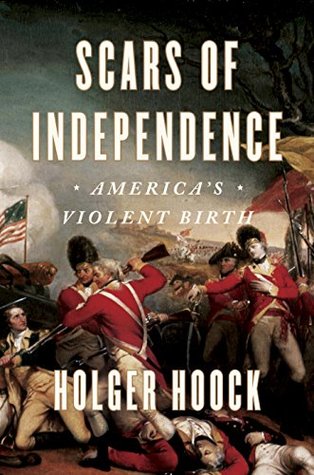More on this book
Kindle Notes & Highlights
by
Holger Hoock
Read between
November 5 - November 20, 2017
Words are a large part of how the work of violence is done, and this was just the kind of language that might prepare Americans for a brutal war against their countrymen.22
The Revolutionaries relied on terror—acts of violence and the threat of violence—to crush dissent.
While forging an identity around the excessive violence they had endured at the hands of the British, Americans scrubbed their own Revolutionary War record, which they celebrated as “untarnished with a single blood-speck of inhumanity.” In 1815, one orator felt confident that “[o]ther revolutions have been conducted with sanguinary violence; ours with a spirit of dignified moderation, worthy of the cause, and characteristic of the nation. The patriots of the revolution were as humane as they were brave.” Already the whitewashing was well under way.6
While Patriots displayed their old scars as cause for national pride, Loyalists had little choice but to hide their trauma. The dominant national narrative of Patriot martyrdom branded the Loyalists as un-patriotic, un-American dissenters. They were effectively eliminated from public discourse, and a mantle of collective amnesia fell over the violence that Patriots had inflicted on their neighbors. We find little trace in the American historical consciousness of the threats, physical abuse, and imprisonment endured by thousands. The Patriots controlled the story of Revolution, war, and
...more
An effective narrative of victimhood helped the Revolutionaries legitimate their rebellion, stir national sentiment, and rally support—even and especially when they suffered defeats. By contrast, the British were hampered both by divisions over what forms and degrees of violence to deploy, and by an unwillingness or inability to match the Americans in the war of rhetoric.
As they engaged global terrorism, Americans appeared to be clinging to a romanticized image of their original war—at least if the continued success of founders’ biographies, and campaign narratives privileging Patriot perspectives, are anything to go by. But, as I have suggested in this book, we should be mindful of the messy and intrinsically violent nature of America’s Revolution and first civil war. The violent story of the nation’s not-so-immaculate conception reads as a cautionary tale for the American empire, with its persistent impulse to intervene in other countries’ revolutions and
...more
This highlight has been truncated due to consecutive passage length restrictions.


